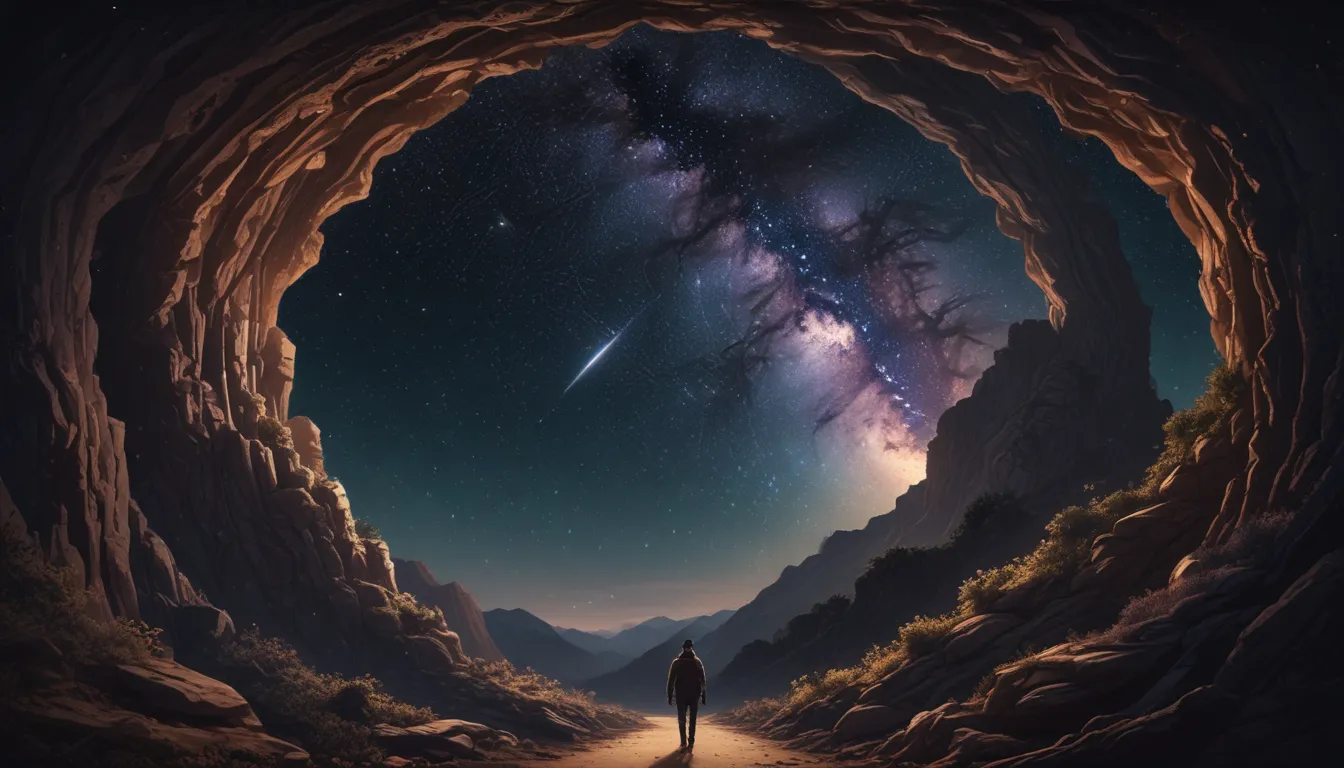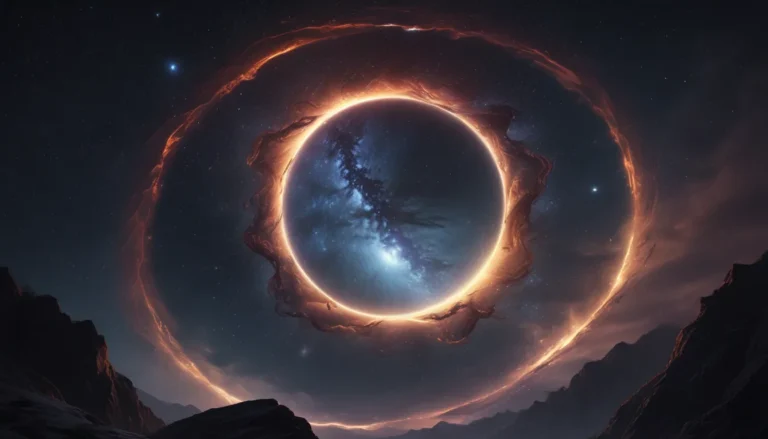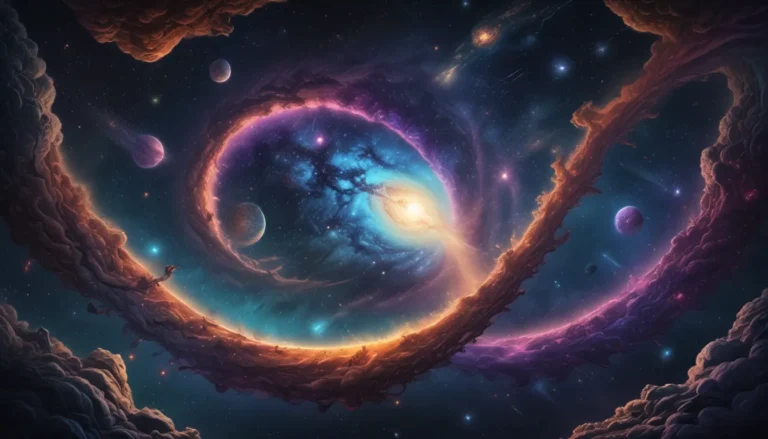The pictures we use in our articles might not show exactly what the words say. We choose these pictures to make you interested in reading more. The pictures work together with the words but don’t take their place. The words still tell you the important facts.
Stars have entranced humanity for generations with their shimmering allure in the night sky. These celestial giants hold within them vast mysteries and wonders that continue to inspire awe and curiosity. From their diverse sizes, colors, and lifespans to their essential role in the creation of heavy elements, stars offer a captivating journey into the depths of the universe. Whether you are an avid astronomy enthusiast or simply find solace in gazing at the stars, this article will take you on an enlightening exploration of 20 intriguing facts that will deepen your appreciation for the celestial wonders above. So, grab your telescope, find a cozy spot, and join us on an extraordinary voyage into the mesmerizing world of stars!
Delving Into the Cosmos: Unveiling the Marvels of Stars
Stars are not mere twinkling lights in the firmament; they are celestial powerhouses that illuminate the cosmos with their radiant presence. Let's embark on a journey to unravel the enigmatic realm of stars and unearth 20 captivating facts that will broaden your horizons and ignite your passion for the mysteries of the universe.
The Sun: A Stellar Revelation
- The Sun, a Star: Contrary to popular belief, the Sun is not just a life-giving orb in our sky but a star in its own right. Nestled within our solar system, the Sun shines as the nearest star to Earth, providing us with warmth, light, and sustenance.
Diversity in the Universe: A Stellar Spectrum
- A Stellar Array of Sizes: Stars exhibit a staggering range of sizes, from compact neutron stars to colossal giants. Behold the grandeur of UY Scuti, the largest known star, towering over 1,700 times the size of our Sun.
A Celestial Birth: From Nebulae to Stars
- Nebulae: Cosmic Incubators: Stars take shape within vast nebulae, massive clouds of gas and dust scattered throughout the cosmos. Through the force of gravity, these nebulae coalesce into dense cores, igniting the fiery birth of stars through nuclear fusion.
The Chromatic Symphony: Colors of the Stars
- Temperature Tints: The hues of stars vary based on their temperatures. Hotter stars emanate a blue or white radiance, while cooler counterparts glow in hues of red or orange. Marvel at our yellow Sun, showcasing a serene shade amidst the celestial palette.
Cosmic Duets: Stars in Tandem
- Binary Systems: Witness the cosmic dance of binary stars as they elegantly orbit a shared center of mass. These stellar pairs, boasting diverse sizes, temperatures, and lifespans, weave intricate celestial choreography across the cosmos.
Illuminating Insights: Energy Production in Stars
- Nuclear Fusion: At the heart of stars, a cosmic alchemy unfolds as hydrogen atoms fuse to birth helium, unleashing torrents of energy. This fusion fuels the luminous radiance that defines stars and powers the cosmos.
A Cosmic Hourglass: Time’s Passage for Stars
- Varied Lifespans: The lifespan of a star hinges on its mass, with smaller stars enduring for billions of years and massive counterparts meeting a swift demise in spectacular supernova events. Witness the ephemeral beauty of stars, fleeting yet eternal in their essence.
Cosmic Abyss: The Enigma of Black Holes
- Black Hole Crestation: Behold the awe-inspiring spectacle as massive stars, depleted of nuclear fuel, collapse into the abyssal depths of black holes. These cosmic enigmas ensnare light and matter with gravitational fervor, shrouding themselves in impenetrable darkness.
Radiant Emissions: Starlight Spectra
- Radiant Diversity: Stars emit a rich tapestry of radiations, from visible light to ultraviolet rays, X-rays, and gamma rays. These emissions unveil insights into a star's composition and temperature, painting a luminous portrait of celestial vibrancy.
Astral Realms: The Domain of Planetary Systems
- Exoplanetary Phenomena: Just as our Sun hosts a retinue of planets, other stars too harbor planetary systems of their own. Explore the enigmatic worlds of exoplanets, beckoning us to ponder the vast possibilities of extraterrestrial existence.
Ethereal Flickers: The Twinkle of Stars
- Atmospheric Mirages: Witness the enchanting twinkle of stars as starlight traverses Earth's atmospheric layers, bending and shimmering in a ballet of beams. Let the ethereal twinkling of stars spark wonder in your soul.
Cosmic Cartography: Stars as Navigational Guides
- Stellar Navigation: Across millennia, stars have served as steadfast beacons for sailors, explorers, and astronomers navigating the vast expanses of Earth. Through celestial observations, we chart our course amidst the boundless oceans of space.
Celestial Clusters: Galactic Communities of Stars
- Star Cluster Galore: Encounter the marvel of star clusters, celestial communities knit together by the gravitational embrace. From sprawling open clusters to compact globular enclaves, stars unite in glittering harmony across cosmic tapestries.
Celestial Outbursts: The Symphony of Supernovae
- Explosive Endings: Behold the cataclysmic crescendo as massive stars culminate their existence in dazzling supernova eruptions. These grandiose spectacles unleash torrents of energy, momentarily outshining entire galaxies in cosmic brilliance.
Elemental Alchemy: Stars as Cosmic Forges
- Nucleosynthesis Miracles: Within the crucible of stars, elements beyond hydrogen and helium are forged through nucleosynthesis. Witness the birth of carbon, oxygen, iron, and other heavy elements, seeding the cosmos with the building blocks of creation.
Luminous Splendor: The Brilliance of Stars
- Majestic Magnitude: Stars shine forth in varying brilliance, measured by the magnitude scale. Embark on a celestial journey to Sirius, the brightest star in the nocturnal firmament, casting its radiant glow upon the cosmic canvas.
Cosmic Heartbeats: Pulsations in the Celestial Tapestry
- Pulsating Stars: Marvel at the rhythmic pulsations of Cepheid stars, expanding and contracting in luminous cadence. These celestial metronomes, their pulses akin to cosmic heartbeats, unveil the secrets of distant cosmic distances.
Celestial Categories: Stars Classified
- Spectral Chronicles: Stars don spectral mantles, categorized into spectral types based on temperature and features. Journey through the Morgan-Keenan classification, from scorching O-type stars to resplendent M-type luminaries.
Cosmic Crucibles: Stars as Alchemical Furnaces
- Creators of Elements: Stars bestow upon the cosmos heavy elements vital for cosmic evolution. From the depths of stellar cores arise the seeds of life, as stars bequeath the universe with the gift of creation.
Everlasting Fascination: The Enduring Enchantment of Stars
- Historical Reverence: Across epochs, stars have enthralled humanity with their splendor and mystery, inspiring legends and scientific revelations alike. As we gaze skyward, we stand in awe of the timeless allure of the celestial wonders above.
Illuminating Insights: Unveiling the Universe’s Splendors
In conclusion, the realm of stars beckons us with its wondrous tapestry of beauty, diversity, and enigma. Through our exploration of these 20 enthralling facts about stars, we have ventured into the boundless cosmic realms, deepening our understanding and reverence for the celestial wonders above. From their stellar births to their dramatic endings, from their radiant hues to their pulsating rhythms, stars captivate us with their eternal allure. So, as you gaze up at the night sky, remember the cosmic symphony of stars, ever-present guides in our journey through the vast expanse of the universe.
Starlit Wisdom: FAQs
- What Defines a Star?
-
A star is a luminous sphere of gas, primarily hydrogen and helium, sustained by gravitational forces and emitting heat and light through nuclear fusion.
-
How Do Stars Form?
-
Stars emerge from colossal nebulae, clouds of gas and dust that collapse under gravity to ignite the process of stellar formation.
-
How Are Stars Classified?
-
Stars are categorized based on temperature, size, and luminosity, with the spectral classification system dividing them into distinct classes.
-
What Determines a Star's Lifespan?
-
The mass of a star dictates its lifespan, with higher-mass stars experiencing shorter lifespans culminating in varying cosmic phenomena.
-
Can Stars Perish?
-
Indeed, stars can meet diverse fates based on their mass, transitioning into white dwarfs, neutron stars, or spectacular supernova events.
-
How Far Do Stars Reside?
-
The distance to stars varies widely, from the nearest cosmic neighbors like Proxima Centauri to distant luminaries spanning thousands of light-years.
-
Are Stars Reachable by Humanity?
- While current technology limits human travel to stars beyond our solar system, ongoing advancements pave the way for potential interstellar voyages in the future.
Embrace the Cosmic Wonder
Our commitment to illuminating minds with enriching and authentic content underscores our dedication to sharing the marvels of the cosmos. Each fact we unveil is a testament to the vibrant tapestry of insights contributed by individuals like you, enriching our collective understanding of the universe. Trust in our pledge to offer engaging and reliable content as we traverse the cosmic expanse together, in awe of the eternal allure of the stars above.






